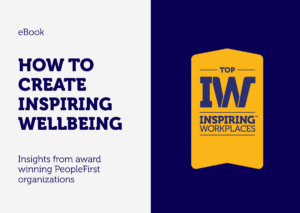
18th October 2023
Distinguishing Between Value-Enhancing and Value-Diminishing Employees

According to new McKinsey research, more than half of employees feel relatively unproductive at work due to pandemic-induced changes in work dynamics. Research identifies six employee archetypes, ranging from highly dissatisfied and disengaged to thriving stars who boost engagement and performance. Companies need tailored strategies to move workers toward greater engagement and satisfaction, aligning their employee value proposition and experience accordingly. Recognizing and addressing specific factors influencing each archetype can help improve overall workforce performance, reducing costs and building a more resilient, engaged team.
From the original article written by Aaron De Smet, Marino Mugayar-Baldocchi, Angelika Reich and Bill Schaninger and published by McKinsey&Company.
The pandemic has forced major changes in how, when, and where people work. It has also bedeviled employers. Due in part to new hybrid and remote-working models, companies are struggling to find objective ways to gauge employee effectiveness—a critical challenge as labor costs have increased and worker productivity has declined.
According to new McKinsey research, employee disengagement and attrition could cost a median-size S&P 500 company between $228 million and $355 million a year in lost productivity (see sidebar, “Methodology”). Over five years, that’s at least $1.1 billion in lost value per company.
These are big numbers that strike at the heart of value creation. To address the problem, corporate leaders first have to grasp that their workforces are not monolithic when it comes to employee experience and that the tactics to increase performance require a more segmented approach. Leaders can then apply differentiated strategies to groups of employees that boost levels of satisfaction and commitment, performance, well-being, and, ultimately, retention and engagement.
Our latest research identifies six distinct employee groups, or archetypes, across a spectrum of satisfaction, engagement, performance, and well-being. These workers range from the highly dissatisfied and actively disengaged—who comprise more than 10 percent of an average organization and who we believe are destroying value—to a group at the other end of the spectrum that we call “thriving stars.” At about 4 percent of an average organization, these super-engaged workers not only perform at high levels themselves but also appear to spread their positive engagement and commitment to others. In between these two poles is a vast middle of workers who experience varying levels of engagement and satisfaction that affect their performance and sense of well-being.
For leaders engaging with these new survey findings, it’s important to note that respondents’ self-reported performance is a useful and revealing way to measure performance, but it’s not the only one. With hybrid patterns here to stay, executives should seek to provide the best possible experience regardless of working model, including offering structure and support around activities best done in person or remotely. This includes helping managers measure performance based on outputs and objectives completed rather than on input factors such as time spent or location.
The central challenge for organizations is to move as many workers as possible away from the highly dissatisfied group (which is probably larger and more destructive than most C-suites realize) and toward greater engagement and commitment. Such a strategy would give workers the opportunity to develop their skills, reducing dissatisfaction and attrition rates and bringing clear financial and organizational benefits over the long term.
In this article, we describe the six worker archetypes that we believe are present in every organization and how big a slice of the workforce pie each archetype represents. We then analyze how the factors that shape a company’s employee value proposition (EVP) and employee experience affect satisfaction, commitment, and performance. And we suggest actions companies can take to augment these levels across their workforces.
Employee archetypes and the satisfaction spectrum
In our prior research on talent trends since the Great Resignation began, we focused on factors that drove people out of work and how companies could retain them amid a uniquely challenging global economic environment. Here, we expand our inquiry to look at the engagement factors that enhance employees’ satisfaction, performance, and well-being, which are crucial components for sustained organizational performance.
Our latest survey data revealed that the higher the level of satisfaction and commitment experienced by employees, the higher their self-reported performance and well-being. The opposite is also true. The lower the level of satisfaction and commitment, the lower an employee’s self-reported performance and well-being.
We looked at 12 factors that affect employees’ satisfaction and commitment levels and found that nearly two-thirds of the total cost to companies from disengagement is captured by the top six factors. For most companies, a significant number of employees are experiencing at least one of these factors, driving dissatisfaction and disengagement and, ultimately, lower self-reported performance. Put simply, these engagement factors have become disengagement factors for a large portion of the workforce.
In each of the six archetypes, satisfaction and commitment levels are influenced by a specific combination of EVP factors, mostly coming out of those top six factors. These distinct groups, which we describe next, are important for organizational leaders to understand so that they can create tailored retention and engagement strategies that move employees from the least engaged part of the spectrum to the most engaged.
1. The quitters: Headed for the door (or already gone)
We estimate this group to be around 10 percent of the workforce in a typical organization.
The quitters are not necessarily the lowest performers in an organization, but they may be some of the least satisfied and committed. Eventually, those feelings can affect their performance and cause them to leave.
One of the biggest risks that employers face is that their high performers or niche talent begin to feel undervalued. While it is inevitable that some in this group will depart, employers should do everything they can to re-engage niche or formerly high-performing talent who have become disillusioned and fallen into this segment.
One exception in this cohort is a small percentage of individuals who may have been satisfied but have been offered a better position at another company. These are typically highly coveted top performers who don’t necessarily leave because there’s anything wrong but because they feel they can do better. Some of these workers can be persuaded to stay and re-engage, bringing disproportionate value to the organization and their coworkers.
Actions companies can take:
Identify high potential and high-performing workers who may be exploring other options. While enticing counteroffers may deter them from leaving, more effective actions should ideally come before that point.
Strong people leaders who are connected to their teams can keep a pulse on morale, helping to make people feel valued and ensuring that the organization’s compensation packages and benefits are on par for the market average. Also, they can ensure that career paths are clearly designed, with meaningful changes to role type or scope of responsibilities.
2. The disruptors: Actively disengaged and likely to demoralize others
We estimate this group to be around 11 percent of the workforce in a typical organization.
Of the six segments, the actively disengaged group has the potential for the largest negative influence. This is not necessarily because of their behavior but because of how an organization treats them, coupled with the perception of their peers.
The disruptors are second only to the quitters in their dismal satisfaction and commitment rates, but by staying and either “quiet quitting” or loud quitting (that is, openly expressing their negative feelings about work), they model a lower level of performance. These employees aren’t disruptive in the positive sense of accelerating change at an organization. Instead, they are productivity and energy vampires, sucking the motivation out of work and workers around them. They also create more work for others and can undermine morale—especially when companies issue blanket pay raises or rewards.
According to equity theory, solid performers lose motivation if they feel that others who are not pulling their weight receive the same rewards.5 It isn’t lost on high performers when their actively disengaged colleagues receive similar rewards and benefits for a fraction of the work. This feeling of inequity will eventually truncate the efforts, motivation, and commitment of an organization’s best people. Conversely, when peers hold one another accountable, research shows that productivity can increase.
Actions companies can take:
These disengaged employees lost trust in the organization over time and began to behave in a counterproductive way. Yet employers should reject the notion that these individuals are inherently toxic; rather, it’s their actions that are having a toxic effect on the workplace.
Leaders should both address those who are already in this category and prevent strong performers from falling into it.
Employees already in this group may feel that their needs are not being met, so they rebel and start a vicious cycle that reinforces their behavior within the organizational ecosystem. Career development and advancement opportunities are essential for employees in this group to see that the organization is investing in them and that they have a positive future. Showing a deeper connection between the work they are doing and a higher purpose is also important. Employees with a higher sense of purpose at work are less likely to leave or disengage, McKinsey analysis shows. Lastly, managers can ensure that the compensation package meets the bar for the market average.
If these strategies don’t work, companies can offer a change of scenery. Shifting people’s roles, teams, or their network of collaborators may give them the fresh start they need to re-engage and be fulfilled. They might be assigned a coach or mentor or given a performance-related plan to track improvements. If none of these interventions are effective, it may be just a matter of time before some people leave.
At the same time, leaders can protect their best performers from feelings of inequity for carrying such a heavy load while the most disruptive workers are behaving counterproductively. Here, four actions can help: ensure that the performance management system recognizes and rewards high performance; make sure that managers are trained in providing individualized praise and public recognition for a job well done; connect the work that star performers are doing with a higher organizational purpose; and provide star performers with advancement opportunities that reflect their high performance and potential.
3. The mildly disengaged: Doing the bare minimum
We estimate this group to be around 32 percent of the workforce in a typical organization.
Mildly disengaged workers, who report below-average commitment and performance levels, are neither satisfied nor actively disengaged and disruptive in a way that harms the organization. They do put in the time and effort to fulfill minimum job requirements, but they are not proactive, lagging behind in well-being and self-reported performance. Leaders should not expect these workers to make sacrifices for the company over their personal lives.
This group’s sagging productivity—along with the financial costs associated with the previous two archetypes—can cost companies dearly in lost value. Taken together, these three groups comprise more than half of a typical organization’s workforce. Still, most of these employees can be re-energized to significantly improve their engagement and commitment, yielding a big performance boost.
Actions companies can take:
To elevate performance in this group, employers can target similar EVP factors as for the disruptors, while adding flexibility. This means considering not just where a job is done but also how and when it gets done. Autonomy is crucial to these employees. As workers who are dissatisfied but still doing the bare minimum, they may recapture their zest for the job with the help of an increased sense of agency. If they are micromanaged, they may further disengage and risk falling into the actively disengaged group.
However, if leaders offer these workers opportunities to develop, with a solid compensation package and autonomy over their work, they can cross the threshold toward engagement. This can bring clear financial benefits to the company while increasing the morale of a core contingent of workers.
Interestingly, when employees are dissatisfied and seeking recognition for their value, compensation acts as only a temporary motivator for retention.
Read the full article to find out the remaining three employee archetypes (The double-dippers, The reliable and committed and The thriving stars) and which working models help your employees thrive.
Download our ebooks on:
Inspiring Workplaces eBook: How to Create Inspiring Wellbeing (inspiring-workplaces.com)
eBook: The 4-day week: A game changer or just a fad? (inspiring-workplaces.com)







